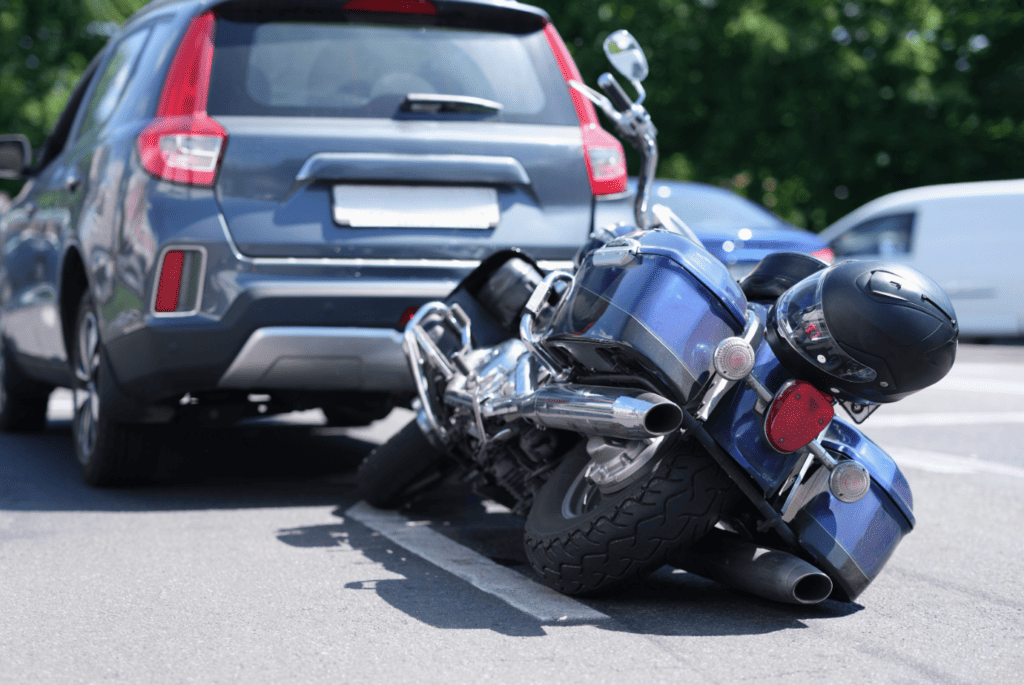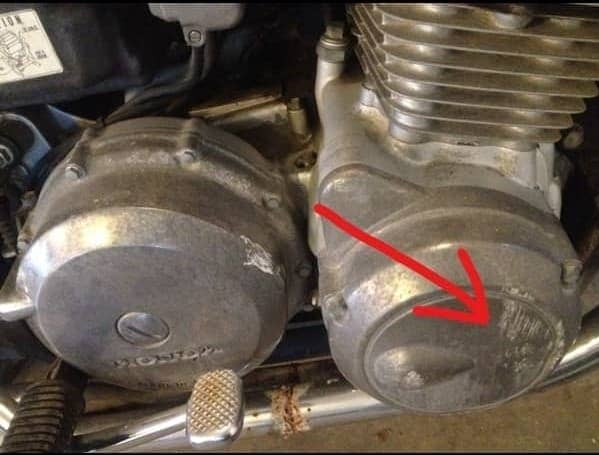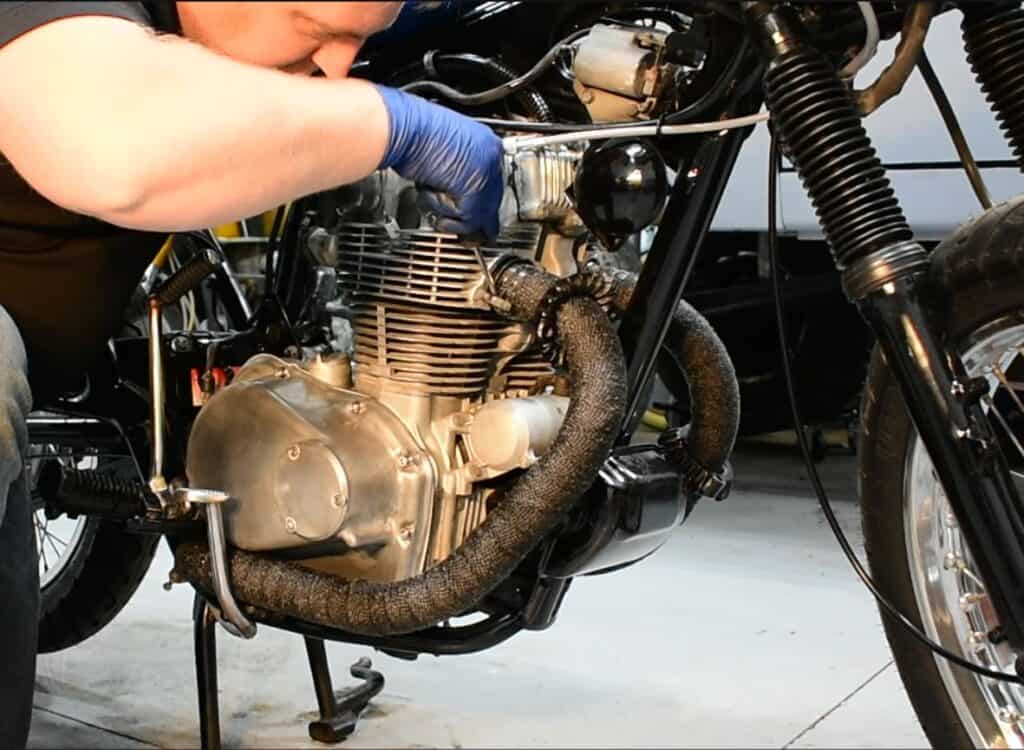
Seeing a motorcycle on its side seems a bit unnatural to most. Too many times I have seen a motorcycle in a state like this and I often am asked if it’s bad for the motorcycle when that happens.
So, can you lay a motorcycle on its side? It is unhealthy for a motorcycle to lay on it’s side regularly and for long periods of time. However, if you accidentally drop your motorcycle, it is not detrimental if it was only on it’s side for a brief amount of time (several minutes).
There is a big difference between laying your motorcycle on it’s side for a few minutes and purposely laying your motorcycle on its side for long periods of time. If, for some reason, your motorcycle has been on it’s side for more than a few minutes (hours, days, weeks, or months), then I’ll walk you through some steps of how to check its condition and how to make sure you don’t cause more damage when you try to start it for the first time.
External Issues You’ll Have When You Lay a Motorcycle On It’s Side
There are several reasons why a motorcycle would be on it’s side. The most common instance is moving it by hand, losing balance and letting it fall. For those who have accidentally lost their balance and let it tip over, don’t worry. This is far more common than you think, and people who have ridden their whole lives make this same mistake.
The second most common instance when a motorcycle is laid on it’s side is for safety reasons, meaning if you’re riding a motorcycle down a road and have to tip and slide your motorcycle to prevent impact.
The first risk you run with laying a motorcycle on it’s side is cosmetic issues. The average motorcycle (both dirt bikes and street bikes included) weighs around 400 lbs, and that much weight hitting a thin piece of plastic or sheet metal on the tank is almost guaranteed to crack or dent it.

Fixing or replacing gas tanks is neither difficult nor expensive unless you have a custom paint job. Click here to see my article about how to paint a motorcycle gas tank. You might also have things happen like bending your handlebars, brake handle, clutch handle, foot pegs, throttle, or anything that sticks out of the side of the bike.
A lot of motorcycle designers manufacture their air intake to stick out slightly further than the gas tank which can act as a safeguard. Replacing an air intake is generally a lot cheaper than a gas tank.
Internal Issues You’ll Have When You Lay a Motorcycle On It’s Side
There are several obstacles you face when laying a motorcycle on it’s side for too long. Fluids, such as gasoline, oil, and battery acid can start making their way into parts and crevices that they should never be in.
The most common internal issue when having a motorcycle on it’s side for long periods of time is a phenomenon called hydrolock. Inside your engine is a small cylindrical cavity called a combustion chamber. This is where the air and gas are pushed into and then combust in order for your motorcycle to run.
Oil can seep past the piston rings and settle inside the combustion chamber. If there’s a lot of oil inside the combustion chamber, the spark plug can’t ignite the gas when it gets squirted in because there’s too much material and not enough air. Hydrocarbons only combust when there’s a specific range of gas and air mixture, so if there’s too much hydrocarbon then you run the risk of pumping more and more gas into your combustion chamber.
Once the chamber gets too full it can lock up and cause serious damage to your engine. So if you’ve tipped your motorcycle over and left it there for a while, there are ways to check your motorcycle and possibly fix any damage made which we’ll discuss in a minute.
Most motorcycle batteries are not sealed units; there is a small air port on the top of the battery so the battery doesn’t get over pressurized. When you lay your motorcycle on it’s side, that port will leak battery acid all over the place, which can cause serious cosmetic damage and safety risks to you. See my article here to learn more about what happens when a battery lays on it’s side.
See our YouTube video here for a more visual explanation of what happens when a motorcycle lays on its side.
How Do I Fix a Motorcycle That’s Been On It’s Side For Too Long?

If you’ve laid your motorcycle over on it’s side for an extended period of time, then here are some helpful tips to make sure you don’t damage it any more than it already is.
Aside from replacing scratched and/or bent parts, stand the bike back up and put it on the kickstand. Take out the spark plug(s) and stuff the corner of a rag into the spark plug hole. Note, DO NOT drop anything into the spark plug hole, it can ruin that cylinder. Also don’t stuff the whole rag into the hole, leave enough of it hanging out that you can grab it and pull it out once the rag has soaked up the oil.
Once you have a rag stuffed into the hole, locate your fuse box and pull out the fuse that controls the spark plugs. If you don’t pull out that fuse then you run the risk of electrocuting yourself or damaging your motorcycle more.
Once the fuse is pulled, hit the start button, or if you have a kickstarter then use that to crank the engine. The motorcycle won’t start since you pulled out the spark plugs and the fuse, but trying to start it will force the piston up and down inside the cylinder and force the oil up onto the rag.
It could blow the rag out of the hole too, which is fine, just put it back in. You can use a flashlight to look down into the spark plug hole and make sure you get pretty much all the oil. A tiny bit won’t cause any damage, it’ll just smoke for a second next time you start the motorcycle.
Thread the spark plug back into the hole, reinstall the spark plug wire, and put the fuse back into its original spot. Now you’re ready to fire up your motorcycle to ensure it still runs correctly.
If it makes a grinding noise at all then turn off the motorcycle immediately and don’t attempt to keep cranking it. At this point, you’ll likely need a mechanic to take a look at it.
How To Tell If a Motorcycle Has Been Tipped Over
I have bought and sold a lot of motorcycles, and there is one common question that I always get asked when selling, “has it ever been tipped over?” I’ll tell you the same thing I tell everyone I’ve ever sold a motorcycle to. Any used motorcycle you buy, just assume that it has been laid over on its side at least once and then you’ll never be disappointed.
Even the most experienced riders occasionally have a slip on some gravel or an unaware motorist swerves in front of them. Anyone who has spent a good amount of time riding a motorcycle will agree that there are only two types of motorcycle riders: those who have tipped their motorcycle, and those who will eventually tip over their motorcycle.
There are plenty of physical signs to look for to indicate a motorcycle has been laid on its side and/or tipped. First off, ask the previous owner. If they say yes then ask how fast they were going, if they collided with anything, and if repairs were made to the bike afterwards.
If they say no, then look for signs yourself. Many people will lie about it just to sell their motorcycle easier. Some easy signs of a tipped motorcycle to look for are:
- a gas tank with large dents or long deep scratches
- bent foot pegs
- bent or broken fins on the engine
- any scratches on the painted metal or anywhere on the engine that are of notable size
- damaged crankcase
- scratched air intake (if it’s one that pokes out of the side of the motorcycle)
- bent throttle, brake handle, and/or clutch handle
- bent or crooked handle bars
If you’re more concerned that the motorcycle has been in an accident, check out my helpful article here that’ll guide you through the steps for checking this. If you’re looking into purchasing a motorcycle that has been tipped, don’t worry too much about it. Assess the physical damage and make sure it runs well and you’ll be just fine.
Related Questions
Can I lay a motorcycle on it’s side if there are no fluids in it? It is okay to lay your motorcycle on it’s side if you know for certain there are no fluids in it. This may be helpful if you are transporting a motorcycle with the only option of laying it on it’s side. Just remember you run the risk of damaging parts like the handlebars, levers, or footpegs. Motorcycles were designed to stay on their wheels.
How can I prevent my motorcycle from tipping? Be sure to always use your kickstand or center stand. Buy a motorcycle stand if you don’t trust your kickstand or center stand. Always use straps when transporting. And ask for help if you’re not confident with moving a motorcycle by yourself.
